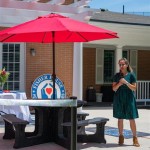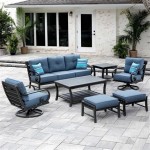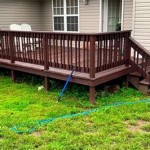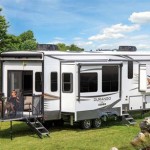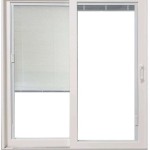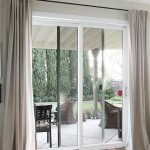Free-Standing Sun Shades for Patios: Enhancing Outdoor Living
Patios serve as extensions of the indoor living space, offering areas for relaxation, entertainment, and dining in the open air. However, prolonged exposure to direct sunlight can significantly diminish the usability and comfort of a patio. Free-standing sun shades offer a versatile and effective solution for mitigating the negative impacts of intense sunlight, allowing individuals to enjoy their patios regardless of the time of day or prevailing weather conditions. These structures, not reliant on existing buildings for support, provide flexible shading options and contribute to an enhanced outdoor living environment.
The market for free-standing sun shades has expanded considerably in recent years, reflecting an increased awareness of the health risks associated with excessive sun exposure and a growing appreciation for outdoor living spaces. Consumers now have access to a diverse range of designs, materials, and features, enabling them to select solutions that align with their aesthetic preferences, budgetary constraints, and specific shading requirements. This article explores the key aspects of free-standing sun shades for patios, including types, materials, benefits, and considerations for selection and installation.
Understanding the Primary Types of Free-Standing Sun Shades
Free-standing sun shades are available in several distinct types, each characterized by a unique structural design and shading mechanism. These types cater to different patio sizes, architectural styles, and desired levels of sun protection. Understanding the nuances of each type is crucial for making an informed decision.
Umbrellas: Patio umbrellas represent the most common and readily available form of free-standing sun shade. These structures consist of a fabric canopy supported by a central pole and a weighted base. Umbrellas are generally portable and relatively inexpensive, making them suitable for smaller patios or areas where shading requirements may vary. The canopy fabric is typically treated to provide UV protection and water resistance. Umbrellas are available in a variety of shapes, sizes, and colors, allowing homeowners to customize their outdoor space. However, umbrellas may offer limited coverage compared to other types of sun shades and can be susceptible to wind damage if not properly secured.
Sail Shades: Sail shades, also known as shade sails, consist of large pieces of fabric tensioned between multiple support points. While often attached to existing structures, sail shades can also be supported by free-standing posts, creating a dynamic and visually appealing shading solution. Sail shades are typically made from woven polyethylene fabric, which provides excellent UV protection and breathability. The open weave allows air to circulate, preventing heat buildup beneath the shade. Sail shades can be custom-designed to fit specific patio dimensions and provide varying degrees of sun coverage. The angled design of sail shades allows for effective water runoff, preventing pooling and extending the lifespan of the fabric.
Pergolas: Pergolas are open-frame structures typically constructed from wood, metal, or composite materials. While traditionally used as decorative garden features, pergolas can be adapted into effective sun shades by adding a lattice roof or draping fabric across the beams. This creates a partial shading effect, allowing dappled sunlight to filter through while still providing protection from direct rays. Pergolas can be customized with climbing plants, further enhancing their aesthetic appeal and adding to the natural shading effect. Pergolas offer a more permanent shading solution compared to umbrellas or sail shades and can significantly enhance the architectural character of a patio. However, they may require more extensive installation and construction compared to other options.
Cantilevered Umbrellas: Cantilevered umbrellas, also known as offset umbrellas, feature a canopy that is suspended from a curved pole, allowing the base to be positioned away from the shaded area. This design provides greater flexibility in terms of placement and eliminates the obstruction of a central pole. Cantilevered umbrellas are often equipped with a rotating mechanism, allowing the canopy to be adjusted to follow the sun's path throughout the day. These umbrellas typically feature larger canopies than traditional umbrellas, providing a wider area of shade. The weighted base of a cantilevered umbrella is designed to provide stability and prevent tipping, even in windy conditions. Cantilevered umbrellas are a more sophisticated and versatile shading solution compared to traditional umbrellas, but they generally come at a higher price point.
Material Considerations for Longevity and Performance
The choice of materials for a free-standing sun shade significantly influences its durability, performance, and aesthetic appeal. Selecting materials that are resistant to weathering, UV degradation, and insect damage is crucial for ensuring the long-term viability of the structure.
Fabric: The fabric used for canopies and sails should be UV-resistant, water-repellent, and fade-resistant. Common fabric options include solution-dyed acrylic, polyester, and woven polyethylene. Solution-dyed acrylic fabrics offer excellent colorfastness and resistance to mildew, making them a premium choice for sun shades. Polyester fabrics are more affordable but may be less durable and fade-resistant than acrylic. Woven polyethylene fabrics are often used for sail shades due to their breathability and strength. The denier (yarn thickness) of the fabric also affects its durability and resistance to tearing. Thicker fabrics with a higher denier rating are generally more resistant to damage. The fabric should also be easy to clean and maintain.
Wood: Wood is a popular material for pergola frames due to its natural beauty and versatility. However, wood is susceptible to rot, insect damage, and weathering, requiring regular maintenance and treatment. Pressure-treated lumber is a common choice for outdoor structures as it is resistant to decay and insect infestation. Redwood and cedar are naturally resistant to rot and insects, making them premium wood options for pergolas. Regular staining or painting is necessary to protect the wood from moisture and UV damage. The type of wood used will significantly impact the overall cost and lifespan of the pergola.
Metal: Metal frames offer superior strength and durability compared to wood. Aluminum and steel are commonly used for sun shade frames. Aluminum is lightweight, rust-resistant, and easy to maintain. Steel is stronger than aluminum but is susceptible to rust if not properly protected with a powder coating or other protective finish. Metal frames can be easily customized with different colors and finishes. The gauge (thickness) of the metal affects its strength and resistance to bending. Thicker gauge metal is more resistant to damage. Metal frames are often more expensive than wood frames but offer a longer lifespan with less maintenance required.
Composite Materials: Composite materials, such as vinyl and fiberglass, offer a low-maintenance alternative to wood and metal. These materials are resistant to rot, insect damage, and weathering. Composite materials do not require painting or staining and are easy to clean. They are available in a variety of colors and textures, mimicking the look of wood or metal. Composite materials are typically more expensive than wood but offer a longer lifespan with less maintenance. The strength and durability of composite materials vary depending on the specific formulation and manufacturing process.
Key Benefits of Installing Free-Standing Sun Shades
The installation of free-standing sun shades yields a multitude of benefits, extending beyond mere sun protection. These benefits contribute to enhanced comfort, increased property value, and improved health for patio users.
Increased Comfort and Usability: By blocking direct sunlight, free-standing sun shades create a more comfortable and usable outdoor space. Shaded patios are cooler and more inviting, encouraging individuals to spend more time outdoors. Sun shades also reduce glare, making it easier to read, relax, and entertain guests. The reduced heat and glare can also protect outdoor furniture from fading and damage. A comfortable and usable patio extends the living space of a home, providing a valuable area for relaxation and entertainment.
UV Protection and Health Benefits: Exposure to excessive sunlight can lead to sunburn, premature aging, and an increased risk of skin cancer. Free-standing sun shades provide essential UV protection, reducing the risk of these health problems. By creating a shaded area, sun shades allow individuals to enjoy the outdoors without exposing themselves to harmful UV rays. The use of UV-resistant fabrics and materials further enhances the protective benefits of sun shades. Protecting children and the elderly from excessive sun exposure is particularly important, and sun shades provide a safe and comfortable outdoor environment for these vulnerable populations.
Enhanced Aesthetics and Property Value: Free-standing sun shades can significantly enhance the aesthetic appeal of a patio and increase property value. A well-designed sun shade can transform a plain patio into a stylish and inviting outdoor living space. The addition of a pergola or sail shade can add architectural interest and visual appeal to a home. Outdoor living spaces are becoming increasingly popular, and a well-designed patio with a sun shade can be a valuable asset when selling a home. Investing in a high-quality sun shade is a worthwhile investment that can provide both functional and aesthetic benefits.
Energy Savings: By shading patios and outdoor areas adjacent to the home, free-standing sun shades can indirectly contribute to energy savings. Shading the exterior walls of a home can reduce the amount of heat absorbed by the building, decreasing the need for air conditioning. This can result in lower energy bills and a reduced carbon footprint. While the energy savings may not be dramatic, they can be a significant benefit over the long term, particularly in hot climates. Strategically positioning sun shades to block direct sunlight from entering windows can further enhance energy efficiency.
Privacy and Screening: Some types of free-standing sun shades, such as pergolas with climbing plants or sail shades strategically positioned, can provide a degree of privacy and screening from neighbors or street traffic. This can create a more secluded and intimate outdoor space. The level of privacy provided will depend on the design of the sun shade and the density of the screening elements. Adding curtains or screens to a pergola can further enhance privacy. A private and secluded patio is a valuable asset that can enhance the enjoyment of outdoor living.

Fim Manufacturing Flexy Zen Commercial Dual Post Umbrella Sunbrella Fabric Type 10 X16 Rectangle Canopy Size And Shape Spa Color

10 Ft X 13 Beige Outdoor Sun Shade Awning Patio Cover With Steel Stand

Have A Question About Aecojoy 10 Ft X 13 Beige Outdoor Sun Shade Awning Patio Cover With Steel Stand Pg 4 The Home

Freestanding Patio Shade Awning

Outsunny 9 8 Ft X 3 Coffee Non Screw Freestanding Patio Sun Shade Shelter With Support Pole Stand And Uv Resistant Fabric 840 262v03cf

Alunotec Free Standing Type Pergola Outdoor Covered Louver System Louvered Cost Garden Shade Buy Sun Smart Product On Aluminum

Advaning Fs Series Free Standing Awning

10x13ft Sun Shade Canopy Sail Gray

Free Standing Retractable Awning Patio Outdoor Manual Sun Shade Shelter Ebay

Flexy Series Commercial Freestanding Retractable Awning 8ft



